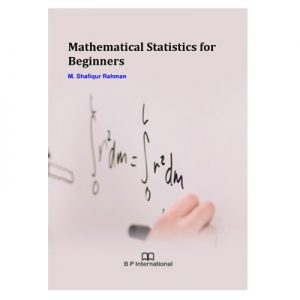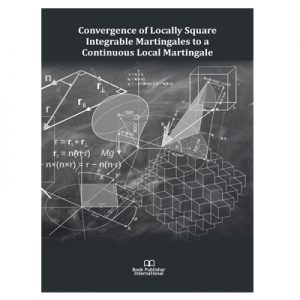Book Author
A. Binelli
A. D. Prasad
A. Maria Vinitha
A. Mary Shamya
A. Prasanna
A. Q. Noha
A. Raveesha
A. Roshni
A. S. V. Prasad
A. V. Ahirwar
Abdel Gadir Mohammed Abdellah Dafaelseed
Abdelaziz Ouchaib
Abdelilah El Hallaoui
Abdesslam Boutayeb
Abdo Abou Jaoudé
Abdou Khadir Fall
Abdoulay Mfewou
Abdul Fattah
Abdul Kareem Igbaria
Abdul Salam
Abdullah Muhamed Yusoff
Abhijeet Ghosh
Abhishek Chakraborty
Abhishek Ghosh
Abid Rizvi
Abiodun Olukemi Famakinwa
Abreha Kidanemariam Hadera
Aby John
Aby John
Adarsh Choudhary
Adebola K. Ojo
ADNAN KA ALSALAMY
Adugna Haile
Aftimichuk Olga
Agegnehu Shibabaw
Aggrey Bernard Nyende
Agilandeswari Devarajan
Ágnes Apáthy
Agola Eric Lelo
Ahmed Ismail Ahmed Safi
Ahti Rahikainen
Aimun Abdelgaffar Elhassan Ahmed
Ajay Vikram Ahirwar
Ajay Vikram Ahirwar
Alain Patrick MAKUNGU
Alan K Betts
Alberto Ritieni
Alcibey Alvarado González
Aleena V Krishnanunni
Alessandro Crisci
Alexander Alexeevich Potapov
Alexander Kleshchev
Alexander Panossian
Alexis Alexander
Ali Abid Abojassim
Ali Yousif Khenyab
Allan Kayk Sales Meneses
Alonso Manuel Paredes Paredes
Amaresh Chandra Panda
Amit Kumar Dutta
Amr Mounir
Ana Lilia LAUREANO CRUCES
Anand Mohan Jha
Ande P. Muralidhar
André Ricard
Andrenilton Ferreira Silva
Andrij Rovenchak
Andriy Yurachkivsky
Ange Imanishimwe
Anil Deka
Animesh Agrawal
Anjali
Anjali Rani
Anju J. B.
Anoop Kumar Tiwari
Anouar Alami
Anteneh Yesigat
Anteneh Yesigat Walelgn
Anthony Kodzo-Grey VENYO
Anthony Olusegun Obilana
Anuradha Pendse
Apurva Potdar
Archana Sasi
Ari Happonen
Arodh Lal Karn
Arpita Banerjee
Arshid Hussain Malik
Arti Saxena
Arunima Chandran, M.D.S.
Asaad Khudhair Hamzah
Asep Awaludin Prihanto
Ashish P. Shah
Ashwini Tumkur Shivakumar
Asma Id Babou
Asmaa Fathi Moustafa Hamouda
Ass. Prof. Zsolt Veres
Associate Prof. (Dr.) Bakare Kazeem Kayode
Astha Garg
Athanase Harerimana
Athar Ali Khan
Athokpam Poireiton
Atul Bali
Atul P. Sherje
Augustin F. C. Holl
Augustin F. C. Holl
Augustin F. C. Holl
Avani Maniar
Avtar Singh Gill MD
Aws AlHares
Ayano Kahano Teyika
Ayman Kassem
Ayman M. El-Esery
B Vishnu
B. Harshitha
B. Niveditha
B. Ravisankar
B.Sh. Usmonov
B.Z. Nuriddinov
Ba Le Huy
Ba Le Huy
Ba Le Huy
Babul Hossain
Baby Niviya Feston
Bacim Alali
Bader Al Arbeed
Balavignesh S
Baluku, R.
Barirega A.
Basappa B Kori
Bashaer M. Muhammad-Baqir
Beatrice Imbaya
Belal Almajali
Belay Teweldemedhin
Benjamin Manasoe
Bernhard Freyer
BH Janaka Pushpakumara
Bhimsen Gurung
Biira, S.
Bindu Hewa Janaka Pushpakumara
Binh Thai Vu
Birmole Radhika
Boregowda Purushotham
Borislav Radoslavov Yoshinov
Bouchta El Batri
Boujemaa Agorram
Brahim Labriti
Bulbuli Khanikor
C. K. Vishnu Priya
C. Pallavi
Camara N’Famory
Carlos Andrés Caro Camargo
Carlos Uribe Chávez
Caroline Atieno Ombok
Catalin Silviu Nutu
Cemil KOYUNOGLU
Ch. Anupriya
Chaitalee Chauhan
Chandan Surabhi Das
Charles Mwandawiro
Charllyton Luis Sena da Costa
Charu Khurana
Chemmalar. S
Chen-Yuan Chen
Chengyou Jia
Chin-Hong Puah
Christa Lehnert-Schroth
Chung Ngo Dac
Clare Padrick
Connor McShaffrey
D. M. Dewaikar
D. Sathish
D. Shanmugapriya
Dahiru, Faiza
Damburam, J. Hussaina
Dan Li
Daniel Lajcin
Daniel Wandera Clief Naku
Daoxin Dai
David Amoah Akolgo
David K. Njeru
David Rowland
David Rowland
De-Graft Owusu-Manu
Debaditi Goswami
Debaroti Das
Debashis Roy
Debleena Roy
Debleena Roy.
Deboleena Paul
Deepak Chandramohan
Deepak Kohat
Dejian Zhang
Denise Aparecida Gonçalves de Oliveira
Devendra Kumar Kurrey
Dhamyaa Saad Khudhur
Dharitri Dwivedy
Dheaa Shamikh Zageer
Didik Harnowo
Didik Harnowo
Dimpi Dewangan
Dipamani Sarma
Dipu Samanta
Divya Bysani
Diyoke Kenneth Onyeka
DKS Lakshminrusimhan
Donald Saint Patrick Taylor
Donghong Yang
Donit John
Dr Despoina Menti
Dr Georgios N. Lyrakos
Dr Swathi Metla
Dr Y.V. Sudha Devi
Dr. (Mrs.) Fahmida Khan
Dr. A. P. Kulaichev
Dr. A. Puvi Lakshmi
Dr. A. Ruckmani
Dr. Abbas Mohammed
Dr. Abd Elmoneim Osman Elkhalifa
Dr. Abhijeet Sande
Dr. Abhishek Naik
Dr. Abinawanto
Dr. Ademir de Oliveira Ferreira
Dr. Afroz Alam
Dr. Ahmed Medhat Mohamed Al-Naggar
Dr. Alina Georgeta Mag
Dr. Alina Georgeta Mag
Dr. Alka Bharat
Dr. Amal Hegazi Ahmed Elrefaei
Dr. Amanpreet Kaur
Dr. Amrapali D. Gosavi
Dr. Ana Cláudia Correia Coelho
Dr. Ana Cláudia Correia Coelho
Dr. Anand Gudnavar
Dr. Anandarajagopal Kalusalingam
Dr. André Ricard
Dr. Aneta T. Popova
Dr. Angelo Mark P Walag
Dr. Angelo Mark P Walag
Dr. Angelo Mark P Walag
Dr. Angelo Mark P Walag
Dr. Anil Tomar
Dr. Ankush Gupta
Dr. Anshul Bansal
Dr. Anshul Bansal
Dr. Anthony Itopa Joseph
Dr. Anuj Kumar Goel
Dr. Anuj Kumar Goel
Dr. Anuj Kumar Goel
Dr. Arun Kumar B. R.
Dr. Ashish Anand
Dr. Ashish Kumar Parashar
Dr. Ashraf Talaat Youssef
Dr. Ashraf Talaat Youssef
Dr. Ashraf Talaat Youssef
Dr. Asma Hanif
Dr. Asma Hanif
Dr. Asmaa F. Hamouda
Dr. Atila Yildirim
Dr. Atila Yildirim
Dr. Atila Yildirim
Dr. Atila Yildirim
Dr. Aurora Martínez Romero
Dr. B. Rajyalakshmi
Dr. B. Sirisha
Dr. B.V.S. Kiran
Dr. Bakare Kazeem Kayode
Dr. Bakare Kazeem Kayode
Dr. Barkat Ali Khan
Dr. Barkat Ali Khan
Dr. Belisario Dominguez-Mancera
Dr. Belkacem Chaouchi
Dr. Bikram Keshari Das
Dr. Bimal Deb Nath
Dr. Catalin Silviu Nutu
Dr. Ch. Naga Jyothi
Dr. Chandra Sekhar Reddy
Dr. Charbell Miguel Haddad Kury
Dr. Chen Chin Chang
Dr. Chen Chin Chang
Dr. Cheryl Antony
Dr. Chetankumar. S.M.
Dr. Chun-Chien Kuo
Dr. Cuddapah Dhananjaya Rao
Dr. D. Anitha
Dr. D. N. P. Prema Ponmani
Dr. D. Udaya Kumar
Dr. D.V.S. Akshay
Dr. Dariusz Jacek Jakóbczak
Dr. Dariusz Jacek Jakóbczak
Dr. Dariusz Jacek Jakóbczak
Dr. Darko Nozic
Dr. Darko Nozic
Dr. Davinder Sing Rathee
Dr. Deepak Nandedkar
Dr. Deepal S. Benaragama
Dr. Deepanshi Sharma
Dr. Deepasree S Kumar
Dr. Deepshikha Gahlot
Dr. Demissu Hundie Senbeta
Dr. Devi R. Nithya
Dr. Dharmesh Chandra Sharma
Dr. Dhastagir Sultan Sheriff
Dr. Dipak Kewalramji Koche
Dr. Divya Subramanian
Dr. Dolatsinh Zala
Dr. E. Kesavulu Reddy
Dr. E. Seda Koc
Dr. E. Seda Koc
Dr. Elisha Otieno Gogo
Dr. Emmanouil Magiorkinis
Dr. Emmanouil Magiorkinis
Dr. Emmanuel Innocents Edoun
Dr. Emmanuel Innocents Edoun
Dr. Essam A. Makky
Dr. Evangelos V. Gkogkas
Dr. FAGBADEBO Omololu Michael
Dr. Fahmida Khan
Dr. Fang Xiang
Dr. Fang Xiang
Dr. Farzaneh Mohamadpour
Dr. Farzaneh Mohamadpour
Dr. Farzaneh Mohamadpour
Dr. Farzaneh Mohamadpour
Dr. Fatima Mubarak
Dr. Fatima Mubarak
Dr. Fatima Mubarak
Dr. Femi R
Dr. Figen Balo
Dr. Firas Tayseer Ayasrah
Dr. Francisco Cruz Sosa
Dr. G. Janaki
Dr. Genji Imokawa
Dr. George P. Laliotis
Dr. George P. Laliotis
Dr. Georgios Tsoulfas
Dr. Gerd Kaupp
Dr. Giou-Teng, Yiang
Dr. Giovanni Bucci
Dr. Giovanni Bucci
Dr. Giulio Tarro
Dr. Giuseppe Murdaca
Dr. Gnana Sheela K
Dr. Gonzalo Emiliano Aranda Abreu
Dr. Guang Yih Sheu
Dr. Guang Yih Sheu
Dr. Gul Ozcan
Dr. Hannah Sugirthabai Rajila Rajendran
Dr. Harekrushna Sutar
Dr. Harekrushna Sutar
Dr. Hari Mohan Srivastava
Dr. Hasan Aydogan
Dr. Hayder Ali Mohammed
Dr. Him Lal Shrestha
Dr. Him Lal Shrestha
Dr. Ho Soon Min
Dr. Ho Soon Min
Dr. Hon H. Ho
Dr. Huan Yu
Dr. Ibrahim Shnawa
Dr. Ikumatsu Fujimoto
Dr. Iqtidar Hussain
Dr. Isha Rastogi
Dr. Jacob Manu
Dr. Jaffu Othniel Chilongola
Dr. Jamal Hussaini
Dr. Jamal Hussaini
Dr. James Birya Ndiso
Dr. James E. Curtis, Jr.
Dr. Janardhana Amaranath B.J.
Dr. Jelena Purenovic
Dr. Jelena Purenovic
Dr. Joe David Anton J. M.D.
Dr. John Modise
Dr. John Motsamai Modise
Dr. John Yahya I. Elshimali
Dr. Jong-Wuu Wu
Dr. Jorge Paredes Vieyra
Dr. Juin Choudhury
Dr. Jyoti Hawaldar
Dr. K J Devendra Prasad
Dr. K Sai Geeta
Dr. Kamo P. Chilingaryan
Dr. Kaustubha Nand Bhatt
Dr. Kaveh Ostad-Ali-Askari
Dr. Kavyashree D
Dr. Keerti Naregal
Dr. Khadiga Ahmed Ismail Eltris
Dr. Khalfa Ali
Dr. Khalid Mujasam Batoo
Dr. Khalil KASSMI
Dr. Komal Sihani
Dr. Koteswara Rao Pagolu
Dr. Krishnapriya Vellore
Dr. Kristina Mastanjević
Dr. Kumari Rekha
Dr. Kwong Fai Andrew Lo
Dr. Lanzhuang Chen
Dr. Leo Willyanto Santoso
Dr. Leo Willyanto Santoso
Dr. Leo Willyanto Santoso
Dr. Leye Samuel Ayeni
Dr. Linli Chen
Dr. Luigi Giacomo Rodino
Dr. LUO, Ching-Ruey (Edward)
Dr. M. A. Gopalan
Dr. M. M. Rahman
Dr. M. Sadre Alam Fakhri
Dr. M. Shafiqur Rahman
Dr. M. V. N. L. Chaitanya
Dr. M. Veerendra
Dr. M.V.N.L. Chaitanya
Dr. M.V.N.L. Chaitanya
Dr. M.V.N.L.Chaitanya
Dr. Madhulika Banerjee
Dr. Madogni Vianou Irenee
Dr. Madogni Vianou Irenee
Dr. Mallanna S. Mulimani
Dr. Mallinath V Paramagond
Dr. Manikant Tripathi
Dr. Manikant Tripathi
Dr. Manisha Khulbe
Dr. Manuel Alberto M. Ferreira
Dr. Marcello Iriti
Dr. Maria Ciurea
Dr. Maria Ciurea
Dr. Maria Ciurea
Dr. Maria Serrano Mula
Dr. Maria-Dolores Guillamon
Dr. María-Dolores Guillamón
Dr. Maria-Dolores Guillamon
Dr. Mariusz Cycon
Dr. Matheus Ramalho de Lima
Dr. Mayuri Ganesh
Dr. Md. Masood Ahmad
Dr. Meetika
Dr. Mehmood Ali Noor
Dr. Meryem ALTUN EKIZ
Dr. Mihail Diakomihalis
Dr. Miya Nakazwe Hoyer
Dr. Mohamed Abdeldaiem Abdelhadi Mahboub
Dr. Mohamed Fawzy Ramadan Hassanien
Dr. Mohamed M. El Nady
Dr. Mohammad Reza Naroui Rad
Dr. Mohammad Reza Naroui Rad
Dr. Mohan B. Sannathimmappa
Dr. Mohd Altaf Mir
Dr. Mohd Rafatullah
Dr. Mohd Rafatullah
Dr. Mohd Rafatullah
Dr. Mohd. Altaf Mir
Dr. Monica M
Dr. Mora Veera Madhava Rao
Dr. Mostafa Kamal Arefin
Dr. Muhammad Musaddique Ali Rafique
Dr. Muhammad Musaddique Ali Rafique
Dr. Muhammad Nawaz Baloch
Dr. Muhammad Shaharior Arafat Shawrave
Dr. Muhammad Shehzad
Dr. Muhammad Shehzad
Dr. Muhammad Shehzad
Dr. Muragesh Pattanshetti
Dr. Mustafa Turkmen
Dr. N. Karunakaran
Dr. N. Shyam Sunder Sagar
Dr. N. Thiruniraiselvi
Dr. Nagina Kumar Dubey
Dr. Narayan Thapa
Dr. Naseem A. Qureshi
Dr. Naseem A. Qureshi
Dr. Natt Makul
Dr. Natt Makul
Dr. Natt Makul
Dr. Nayan K. Prasad
Dr. Neelam Das
Dr. Neelam Das
Dr. Neema Acharya
Dr. Neha Munjal
Dr. Nelson Sizwe Madonsela
Dr. Nicolas Padilla- Raygoza
Dr. Nijaguna Gurumurthy
Dr. Nilima Karande
Dr. Nitya Kaushik
Dr. Noor Un Nisa
Dr. Nune Srieenivas
Dr. Nyamupachari Vareta
Dr. Nyingi Joseph Wambua
Dr. Olorunjuwon Omolaja Bello
Dr. Omveer Singh
Dr. Osama A. Saeed
Dr. Osama A. Saeed
Dr. Oscar Jaime Restrepo Baena
Dr. Osunsanmi Foluso Oluwagbemiga
Dr. P. Elangovan
Dr. P. Elangovan
Dr. P. Mohan Rao
Dr. P. Veeramuthumari
Dr. Palash Dutta
Dr. Pawan Kumar
Dr. Peddireddy Sreekanth Reddy
Dr. Pietro Scicchitano
Dr. Pietro Scicchitano
Dr. Pinar Oguzhan Yildiz
Dr. Polagani Nagarjuna
Dr. Polagani Nagarjuna
Dr. Polycarpe Feussi
Dr. Pradip K. Bhowmik
Dr. Prakash Kadu
Dr. Prakash Sonwalkar
Dr. Pramod Kumar Sharma
Dr. Pranav U
Dr. Prasad Karande
Dr. Preeti Deshmukh
Dr. Prerana Shere
Dr. Priyanka Tripathi
Dr. R. A. M. Jainaf Nachiya
Dr. R. Senthilraj
Dr. R. Sindhuri
Dr. Rachid Masrour
Dr. Rafik Karaman
Dr. Rafik Karaman
Dr. Rajani Singh
Dr. Rajat Sharma
Dr. Rajendra Nath Borpuzari
Dr. Rajesh N.
Dr. Rajkumar Venkatesh Raikar
Dr. Ramanjeet Kaur Grover
Dr. Ramesh Gurunathan
Dr. Ramesh Gurunathan
Dr. Ramesh Gurunathan
Dr. Ramesh K. Gurunathan
Dr. Ramzi Marrouchi
Dr. Rana Pratap Maurya
Dr. Ranjay Kumar Singh
Dr. Rashmi Dhawan
Dr. Rashmi Rekha Saikia
Dr. Ratnakirti Roy
Dr. Ravi Kumar Chittoria
Dr. Ravi Kumar Chittoria
Dr. Reena Rai
Dr. Richard W. Sawadogo
Dr. Richard W. Sawadogo
Dr. Richard W. Sawadogo
Dr. Richard W. Sawadogo
Dr. Ridzwan Che Rus
Dr. Ridzwan Che Rus
Dr. Ridzwan Che Rus
Dr. Rinku Agrawal
Dr. Ritu Singh
Dr. Rodolfo Dufo Lopez
Dr. Rohit Raina
Dr. Roopam Devaliya
Dr. Roshan M. Bajracharya
Dr. Rupali Prakash Shirsat
Dr. Rusu Teodor
Dr. Rusu Teodor
Dr. S. K. Singh
Dr. S. Lakshmi Devi
Dr. S. M Nyandemo
Dr. S.M Fazeela Mahaboob Begum
Dr. Sachin Bhaskar Palve
Dr. Sachin Kumar Jain
Dr. Sahaya Sona Thresa
Dr. Saket Singh Chandel
Dr. Sakshita Pal
Dr. Salisu Muhammad Lawan
Dr. Salisu Muhammad Lawan
Dr. Samadhan Surwase
Dr. Samih Antoine Azar
Dr. Samuel Antwi
Dr. Sandesh Suryakant Gurav
Dr. Sanjay P. Dhangar
Dr. Sanjay P. Dhangar
Dr. Sanjeev Kumar
Dr. Sanjeev Kumar
Dr. Saroj Rani
Dr. Satish K
Dr. Sebahattin Tüzemen
Dr. Sevgul Donmez
Dr. Seyed Alireza Mousavi Shirazi
Dr. Shantanu Sharma
Dr. Sharul Sham Dol
Dr. Shi-Hai Dong
Dr. Shigenori Ito
Dr. Shigenori Ito
Dr. Shikha
Dr. Shilpha Sivashankar
Dr. Shivani Vaidya
Dr. Siddaruda M. Biradar
Dr. Simon Muti Mbuvi
Dr. Sławomir Borek
Dr. Sneha Krishnan
Dr. Soma Rani Kolay
Dr. Somu Sunder Lingam, R.
Dr. Subhasis Sen, Retired Scientist
Dr. Suchitra Sachin Palve
Dr. Sumita Gulati
Dr. SungCheal Moon
Dr. Suprakash Chaudhury
Dr. Surabhi Mehrotra
Dr. Suraya Hani Bt Adnan
Dr. Sushant S. Gite
Dr. Syed A. A. Rizvi
Dr. Syed A. A. Rizvi
Dr. T. Selvamuthukumaran
Dr. T. Venkatachalam
Dr. Takashi Ikeno
Dr. Takashi Ikeno
Dr. Tanjula Shair
Dr. Tanushree Das
Dr. Teklu Urgessa Abebe
Dr. Telat Yanik
Dr. Teodora Constantinescu
Dr. Theeranat Suwanaruang
Dr. Thomas F. George
Dr. Tiruveedula Gopi Krishna
Dr. Triki Mohamed Amine
Dr. Triki Mohamed Amine
Dr. Tripti Tikku
Dr. Trishna Borpuzari
Dr. Tsygankova Victoria Anatolyivna
Dr. Tsygankova Victoria Anatolyivna
Dr. Tukesh Soni
Dr. Tuneera Bhadauria
Dr. Turgut Türsoy
Dr. Uma Devi Randhi
Dr. Urvashi Mishra
Dr. V. Pragadeesh Raja
Dr. Vajed Mogal
Dr. Vasilii Erokhin
Dr. Vasilii Erokhin
Dr. Vasilii Erokhin
Dr. Venkatalakshmi Ranganathan
Dr. Veronica Mîndrescu
Dr. Veronica Mîndrescu
Dr. Vigneswaran Ramamoorthy
Dr. Vijaya Khader
Dr. Vijayakumar Poondla
Dr. Vlasta Hus
Dr. Vu Thi Kim Hanh
Dr. Vu Thi Kim Hanh
Dr. Wagih Mommtaz Ghannam
Dr. Wan Mazlina Md Saad
Dr. Wan Mazlina Md Saad
Dr. Wan Mazlina Md Saad
Dr. Win Myint Oo
Dr. Win Myint Oo
Dr. Xianrong Zhou
Dr. Xin Zhao
Dr. Xingting Wang
Dr. Xingting Wang
Dr. Xingting Wang
Dr. Yogesh K. Garg
Dr. Yong X. Gan
Dragutin Djukic
Dung Luu Quoc
Dwi Setyorini
Dwi Setyorini
Dwi Setyorini
E. Fanales Belasio
E. M. Martínez
Edward Chi-Ho Tang
El Mostapha Aouine
El-Sayed Atlam
Eleni Bolovinou
Elijah, M. Iganga
Elikem Kofi Krampa
Elisabeth Ngo Bum
Elsharif Ahmed Bazie
Eman E. Elsharkawy
Eman H. A. Aboul-Ezz
Emanuel Gluskin
Emanzi C.
Emily Longo
Emmanuel Elifadhili Mchome
Enos Mwirotsi Shikanga
Enyew Adgo
Ephantus Kabiru
Er. Kartik Chauhan
Er. Vinod Kumar Pandey
Eric Kwasi Elliason
Esther Ngah
Eswari Beeram
Eustes Kigongo
Ewa Pecka-Kielb
F. Sensi
Faraz Mehmood
Farhan Lafta Rashid
Farhat Jabeen
Fatemeh Alipanahi
Fatima Ezzahra Ait Yahya
Fatma Benyettou
Fayez Aqel
Fazida Karim
Felix Lamech Mogambi Ming’ate
Fenfen Zhang
Fernando B. Mainier
Folkard Asch
Forkpah Pewee
Fr. Ponsiano Okalo
František Zigo
Frida NIMY MBUNGU MIKEMOU
Funmilola Ayeni
G. Cattari
G. S. Kame
G. Sethumadhava Rao
Gabriel Kerr
Gadde Srinivasa Rao
Ganesan G. Ram
Garba Umar
Gaurav M. Doshi
Genji Imokawa
Gerard Dominic
Getachew Alemayehu
Getrude Kakonya-Chifuka
Ghadeer Fawaz Alnojaidi
Ghaliah Obaid F. Alnefaie
Ghanshyam Parmar
Gilbert Danyo
Girirajasekhar Dornadula
Giselher Schalow
Gloria Nwanisobi
Gopal Krishan
Guoqing Shi
GWA Susanto
H. Girija Bai
Ha Van Lam
Hadi Purwanto
Haibin Sun
Haider K AL-Rubai
Haitham Mohammed Ibrahim Al-Zuhairi
Hamid Ali Nagi Al-Jamal
Han Jianghua
Hanan Kamel M. Saad
Hanie Nadia Shasmin
Hans-Rudolf Weiss
Happy Nursyam
Harekrushna Sutar
Harkesh Arora
Hassan M. H. Mustafa
Hassane Faraj
Héctor D. Molina-Ruiz
Hefti Salis Yufidasari
Herbert B. Allen
Heydy Castillejos-Fernández
Hildegarde Danagaï Tekwem
Himanshu Dehra
Himanshu Singh
Hind Mohammed Osman Khalifa
Hirokazu Tohya
Ho Soonmin
Hoan Nguyen Xuan
Hoan Nguyen Xuan
Hoan Nguyen Xuan
Hok-Fu Wu
Hong Anh Le Thi
Houssam Khelalfa
Hridisha Nandana Hazarika
Huaxia Yao
Huijun Feng
Hulas Pathak
Hung Le
Hussain J. Mohammed Al-Alkawi
I.I. Safarov
IBRAHIM M S SHNAWA
IBRAHIM M S SHNAWA
Ibrahim M S Shnawa
Ibrahim Mohamed Saeed Shnawa
Ibrahim Mohamed Saeed Shnawa
Ibrahim Mohamed Saeed Shnawa
Ibrahim Mohammed Saeed Shnawa
Ibrahima Aimé Soumahoro
Ibtisam Jasim Sodani
Ibukun Olukorede Popoola
Igor Bulyzhenkov
Ihab Alfadhel
Imen Saidi
IMJ Mejaya
Immaculee Mutuyimana
Imoh Imeh Johnny
Ines Mahmoud
Ing. Tetjana Tomášková
Innocent Mugudamani
Inyang, William Smart
Irebanije, J. Francis
Irene Laplaza Osta
Ishaya, Ishaku Tilli
Ishtiag Hassan Abdalla Mohammed
Israa M. S. Al Kadmy
Ivet Borissova Koleva
Iyama, William Azuka
J. G. Lartigue
J. J. Cancela
J. Juliet Jeyapackiam
Jairus Nyongesa Koki
Jan Fedacko
Jan Kersschot
Jaroslaw Zubrzycki
Jasmina Stojiljkovic
Jaya Jain
Jayanta Gour
Jayanta Kumar Mallick
Jaykov Foukzon
Jenny Lalmalsawmi Sailo
Jerrine Joseph
Jessy Van Wyk
Jianhong Ke
Jianshe Yang
Jiaxu Chen
Jie Chen
Jiefeng Wu
Jiexuan Liu
Jifu Wang
Jing Wu
Jinghua Zhao
Jinyu Tian
Jiten Rajkhowa
Jitin Rahul
Jitumoni Das
João Gilberto Corrêa da Silva
John Coker Ayimah
John Coker Ayimah
John Motsamai Modise
John O. Messo Raude
Jolanta Bujok
Jonans Tusiimire
Jorge Luis Garcia Alcaraz
José Luis Alvarado Reséndiz
Joseph Dery Nyeadi
Joseph J. Smulsky
Joseph N. Lekunze
Josephat Daniel Lotto
Joyline Mascarenhas
Judith Gomes
Julián Villate
Juliette Koube
Jun-Young Oh
Jyotiprakash Mishra
K. Aruna
K. Bala Chandu
K. Balakrishna
K. Manimekalai
K. Maruthi Prasad
K. N. Shashidhar
K. Phani Raja
K. Sheela Kumari
K. Thyagaraju
K. V. R. Srinivas
Kabunga Amir
Kai-Yin Woo
Kailasapu Himaja
Kamal Behari Devchoudhury
Kamal Singh
Kamna Srivastava
Kanailal Das
Kanaparthi Rosaiah
Kantrol Kumar Sahu
Kapumpe Chilufya
Karabi Das
Karthireddy Syamala
Kartikeya Tiwari
Kassio Ferreira Mendes
Katarína Veselitz Lakticová
Kathryn Burke
Kathryn Moramarco
KATSURA Hidemitsu
Kavita Gupta
Kavita Gupta
Kavita Gupta
Kehinde Kazeem Kanmodi
Ken Colwell
Khadija Abimbola Abdulraheem
Khadim Dioukhane
Khaleel Awadh
Khalid Boukallaba
Kijjambu, C.
Kindie Tesfaye
Kioko Nzuki Mwania
Kirill Voinov
Kosasih Kosasih
Kritika Diwan
Kulbir Singh
Kumar Dookhitram
Kumari Shachi
Kumari Shachi
Kusiima C. B.
Kyalisiime K.
L. E. Weimer
L. S. Hemapala
L. V. Terentieva
L. Wijewardene
Laith Jaafer Habeeb
Laith Jaafer Habeeb
Lakshmi Narasimha Gunturu
Lamidi, Babatunde Tajudeen
Lamidi, Tajudeen Babatunde
Lars Thylén
Laura Garavito
Lawrence Kabuthi Kabinga
Lech Wosinski
Léila Carmen MANDZA
Leo G. Sapogin
Leonard R. Lari
Li Dong
Libin Guo
Linda Christabel S., M.D.S.
Lingen Chen
Lisiane Heinen Fernandes
Loveness A. Nkhata
Luana Izzo
Luis Grave de Peralta
Lyvana Hornelia ZUE EYA
M. Affendy Arip
M. B. Dastagiri
M. Ja. Ivanov
M. Ja. Ivanov
M. K. Kathiravan
M. K. Mohan Maruga Raja
M. R. Dileep
M. Veeramanikandan
Mady Ndiaye
Maha Ali Abdellatif Ali
Mahesh Prasad
Maheshwari Kata
Mahmood J. Jawad
Mahmoud A. Mashkour
Malati C. Yeola
Malati C. Yeola
Malay Mukhopadhyay
Malik M.A. Fakron
Mallappa Kumara Swamy
Manotosh Gayen
Manu Rathee
Mara Kandeva
Marc Moramarco
Marco Antônio Martins de Oliveira
Margaret M. Mweshi
Maria Elisa Caetano Silva
Maria Teresa Bertoldo Pacheco
Mária Vargová
Marian A. Amu-Mensah
Marvin Musinguzi
Mary Anbarasi Johnson
Mary Snow
Maskour Lhoussaine
Mausmi Rastogi
Maxson Kenneth Anyolitho
Maysa Alhawamdeh
Mbabazi, F. K.
Md Zuki bin Abu Bakar @ Zakaria
Md Zunaid Alam
Md. Nazirul Islam Sarker
Meenakshi Jaiswal
Menkova Elena Romanovna
Mgr. Jan Fadrhonc
Mhaid Mhdi Alhajjar
Michael Twum-Darko
Michael Twum-Darko, PhD, FIAP
Michelle Karim James
Mihail Diakomihalis
Mikayel Melkumyan
Miklós Bély
Milad MohammedzadehAsl
Mirza Mohamod Zahir Uddin Bhuiyan
Miss Surekha Majhi
Mithilesh Atulkar
Mitul Kumar Ahirwal
Mobashshera Tariq
Mohamad Hesam Shahrajabian
Mohamed Abdelsabour Fahmy
Mohamed Rashik K. M.
Mohamed Yassin Ibrahim Laissy
Mohammad Salim
Mohammad Salim
Mohammad Shahid Masroor
Mohammad Taghi Sheykhi
Mohammad Taghi Sheykhi
Mohammad Taghi Sheykhi
Mohammed Ayad Abdel Hameed
Mohammed Bayyoud
Mohammed El Messaoudi
Mohammed Elazami Elhassani
Mohammed F. Al Marjani
Mohammed Rameez Rizvi
Mohammed Yachoulti
Mohanad Bashari
Mohd Faizul Bin Mohd Sabri
Mohd. Altaf Mir
Mona Isam El-Din Osman
Moncef Zaki
Monica Cornejo Velazqauez
Mónica García-Munguía
Mortha Sai Veerraju
Moussa DIENG
Mr. P. Velmurugan
Mr. Shivanand Kolageri
Mr. Simon Wangombe Ngari
Mr. Vaithianathan Gnanasundaram
Mr. Vidyapati Jha
Mrs. Dipteerekha Das
Ms. Eunice Monthe John
Ms. Jing Zhang
Ms. Neelima Yadav
Mugabi, M.
Muna S. Kassim
Muninarayana C.
Musingo Tito E. Mbuvi
Mussa Charles Juma
Mussa Charles Juma
Mustafa H. Ahmed
Mutum Sangeeta Devi
Mutum Sangeeta Devi, M.D.S
Muzhikov Valery Gennadievich
My Huong Nguyen Thi
Myron Chernets
N. A. Magnitskii
N. K. Sahoo
N. Mallikarjuna Rao
N’guessan Koffi Eugene
Nada Itorul Umam
Nada R. Alharis
Nádia Fátima Gibrin
Nagat A. Radwan
Nahama, Eric Tetea
Nahla Touati
Najah R. Hadi
Najlaa Saleh Mahdi
Nam Thai Van
Namirimu T.
Naorem Janaki Singh
Narzulla Juraev
Natasha Bathla
Naveen Leno
Naveet Kaur
Navkiran Kaur
Nawal Kishor
Nayan K. Prasad
Neeli Rose Beck
Neelima Yadav
Neteydji Sidiki
Nevine Gamil Waly
NGATIPPE
Nguyen Anh Phong
Nguyen Chi Hai
Nguyen Ho Thanh
Nguyen Thi Diem Hien
Nguyen Thi Trieu
Nguyen Trong Long
Nicholas J. Kavana
Nicholas Jairo Kavana
Nicola Montano
Niel L. Ningal
Nihar Jena
Nik Alif Amri Nik Hashim
Nikolay Takuchev
Nirav Babariya
Nirmal Kumar Betchoo
Nisha Rani Agarwal
Nitesh Parchand
Nitin P. Gudadhe
Noah Sitati
Noel Samuel Macwan
Noorhayati Idros
Notan Haldar
Nubia Belzabet Pérez Olguín
Nur Hafizah Muhammad
Nurul Aida Binti Abu Bakar
Nuryati
Nuwagaba, P.
Nwagbara, Victor Uzoma
Nyadoi P.
Nyadoi P.
O. M. Shabanov
Obed Hugh Ligate
Obou Constantin Okou
Ogola L. S.
Oladimeji Adebayo
Oliver, Peace Mbini
Oloruntoba Kayode
Oluseyi Fabiyi
Oluwafemi Omoniyi Oguntibeju
Omar Jiyed
Omar M. Amin
Ong Choon Hee
Oroubah Barghouthi
Oswald Atiga
Oumaima Karai
P K Sankaran
P. Arockia Jansi Rani
P. K. Sasikumar
P. L. Ravishankar
P. L. Ravishankar
P. Senthil
P. V. Naga Sindhuja
Padmavathi Ganapathi
Pallavi Pradeep Khobragade
Parag Sinchan Roy
Paragjyoti Gogoi
Parvathy Anitha Rajeev, MD
Paschal Banga Nade
Patricia Katowa-Mukwato
Pedro P. Aguas
Pedro Pablo Martinez Padua
Peter Chrysologue Angelo
Peter Paul Bunyard
Pham Van Luong
Pham Vu Phi Ho
Phong Nguyen Tan
Phong Nguyen Tan
Phuong Nguyen Vu Hoang
Piero Chiarelli
Pius Ukoha
Poonam Rani
Poorni
Pradeep T.S.
Prajwal M S
Pramod Kumar Agrawal
Pramod Kumar Agrawal
Pranil V. Sawalakhe
Prashanth Reddy Yella
Pratibha Arun Chandekar
Pratibha Sharma
Pravin Sankhwar
Preeethika Guruprasath
Prem Kumar
Premkumar Munusamy
Prince Kumar
Pritam Sarkar
Priyadharshini Arjunan, M.D.S.
Prof (Dr.) Abd Elmoneim Osman Elkhalifa
Prof Dr. Abd Elmoneim Osman Elkhalifa
Prof. (Dr.) Abd Elmoneim Osman Elkhalifa
Prof. (Dr.) Ana Pedro
Prof. (Dr.) Ana Pedro
Prof. (Dr.) Ana Pedro
Prof. (Dr.) Aysun Turkmen
Prof. (Dr.) Erich Cosmi
Prof. (Dr.) Erich Cosmi
Prof. (Dr.) Kiron. S. S
Prof. (Dr.) Preeti Singh Dhoat
Prof. (Dr.) Sajimon Abraham
Prof. (Dr.) Serpil Unver Saraydin
Prof. (Dr.) Serpil Ünver Saraydın
Prof. (Dr.) Serpil Ünver Saraydın
Prof. (Dr.) Turgut Türsoy
Prof. (Dr.) Turgut Tursoy
Prof. Abbas Mohammed
Prof. Abbas Mohammed
Prof. Abbas Mohammed
Prof. Ahmed Fawzy Yousef
Prof. Ahmed Fawzy Yousef
Prof. Ahmed Kamal Dyab
Prof. Ahmed Medhat Mohamed Al-Naggar
Prof. Ahmed Medhat Mohamed Al-Naggar
Prof. Akmal S. Gaballa
Prof. Ana Pedro
Prof. András Roósz
Prof. András Roósz
Prof. Armando García Chiang
Prof. Arthur V.M. Kwena
Prof. Ashraf Talaat Youssef
Prof. Aurora Martínez Romero
Prof. Aurora Martínez Romero
Prof. Aysun Turkmen
Prof. Begum Rokeya
Prof. Begum Rokeya
Prof. Belkacem Chaouchi
Prof. Charbell Miguel Haddad Kury
Prof. Charbell Miguel Haddad Kury
Prof. Charbell Miguel Haddad Kury
Prof. Charles Mbohwa
Prof. Charles Mbohwa
Prof. Chen Chin Chang
Prof. Chen Chin Chang
Prof. Chen Chin Chang
Prof. Chen Chin Chang
Prof. Chen Chin Chang
Prof. Chun-Chien Kuo
Prof. Darko Nozic
Prof. Dennis Gamad Caballes
Prof. Dr. A F Mohiuddin Khan
Prof. Dr. Debesh Chandra Talukder
Prof. Dr. Dženita Hadžijunuzović-Alagić
Prof. Dr. Hari Mohan Srivastava
Prof. Dr. Ir. Hafnidar A. Rani
Prof. Dr. Jarmila Honzíková
Prof. Dr. Lanzhuang Chen
Prof. Dr. Md. Abu Yusuf Fakir
Prof. Dr. Md. Nazmul Islam
Prof. Dr. Mohamed Fawzy Ramadan Hassanie
Prof. Dr. Nejra Hadžimusić
Prof. Dr. Shaikh Nurul Fattah Rumi
Prof. Dr. Syed A. A. Rizvi
Prof. E. Seda Koc
Prof. Ehab Abdel Aziz Ahmed EL-Shaarawy
Prof. El-Sayed Mohamed Abo-Dahab Khedary
Prof. El-Sayed Mohamed Abo-Dahab Khedary
Prof. Figen Balo
Prof. Figen Balo
Prof. Francisco Cruz Sosa
Prof. Giovanni Bucci
Prof. Giovanni Bucci
Prof. Giuseppe Murdaca
Prof. Giuseppe Murdaca
Prof. Gul Ozcan
Prof. Gustavo Henrique Silva de Souza
Prof. Gustavo Henrique Silva de Souza
Prof. Hamdy M Afefy
Prof. Hamdy M Afefy
Prof. Hamdy M Afefy
Prof. Hasan Köten
Prof. Heluf Gebrekidan
Prof. Huan Yu
Prof. Huan Yu
Prof. Jaffu Othniel Chilongola
Prof. Jelena Purenovic
Prof. John Appleby
Prof. John Yahya I. Elshimali
Prof. Kevin Fernandez
Prof. Khalil Kassmi
Prof. Khalil Kassmi
Prof. Koji Nagata
Prof. Koji Nagata
Prof. Kwong Fai Andrew Lo
Prof. Kwong Fai Andrew Lo
Prof. L. P Mureithi
Prof. Lanzhuang Chen
Prof. Lanzhuang Chen
Prof. Lanzhuang Chen
Prof. Levent SON
Prof. Levent SON
Prof. Luigi Giacomo Rodino
Prof. M. Camino Escolar-Llamazares
Prof. M. Camino Escolar-Llamazares
Prof. Maged Refaat
Prof. Maged Refaat
Prof. Maged Refaat
Prof. Maged Refaat
Prof. Manuel Alberto M. Ferreira
Prof. Marcello Iriti
Prof. Marcello Iriti
Prof. Marcello Iriti
Prof. Matheus Ramalho de Lima
Prof. Matheus Ramalho de Lima
Prof. Michael Twum-Darko
Prof. Mohamed Abdel-Raheem
Prof. Mohamed Fawzy Ramadan
Prof. Mohamed Fawzy Ramadan Hassanien
Prof. Mohamed M. El Nady
Prof. Mohamed M. El Nady
Prof. Mustafa Turkmen
Prof. Mustafa Turkmen
Prof. Olusegun Felix Ayadi
Prof. Olusegun Felix Ayadi
Prof. Oscar Jaime Restrepo Baena
Prof. Oscar Jaime Restrepo Baena
Prof. Pallavi M O
Prof. Pradip K. Bhowmik
Prof. Qing-Wen Wang
Prof. Qing-Wen Wang
Prof. Qing-Wen Wang
Prof. Raad Yahya Qassim
Prof. Raad Yahya Qassim
Prof. Rachid Masrour
Prof. Rachid Masrour
Prof. Rafik Karaman
Prof. Rafik Karaman
Prof. Raghava Rao Tamanam
Prof. Randa Salah Gomaa Mahmoud
Prof. Randa Salah Gomaa Mahmoud
Prof. Randa Salah Juma Mahmoud
Prof. Raphael Nyarkotey Obu
Prof. Rosichon Ubaidillah
Prof. Rusu Teodor
Prof. Rusu Teodor
Prof. Sandra A. Marinho
Prof. Sandra A. Marinho
Prof. Sebahattin Tüzemen
Prof. Sebahattin Tüzemen
Prof. Sheela Maharajpet
Prof. Shi-Hai Dong
Prof. Shi-Hai Dong
Prof. Shi-Hai Dong
Prof. Shi-Hai Dong
Prof. Syed A. A. Rizvi
Prof. Syed A. A. Rizvi
Prof. Syed A. A. Rizvi
Prof. Tekalign Mamo
Prof. Telat Yanik
Prof. Telat Yanik
Prof. Tian-Xiao He
Prof. Vinoth Prabhu Veeramani
Prof. Vinoth Prabhu Veeramani
Prof. Wagih Mommtaz Ghannam
Prof. Wagih Mommtaz Ghannam
Prof. Yong X. Gan
Professor Emeritus Dr. Ibrahim Shnawa
Qi Cheng
Qiang Wang
Qiang-Sheng Wu
Quynh Nguyen Ngoc
R Sumukh Bharadwaj
R. A. Kurbanov
R. Anushri
R. Harihara Krishnan
R. K. Sharma
R. Sai Deepika
R. Uma Devi
R. Vijayakumar
Raad Mohammed Abed
Rabiranjan Murmu
Rachana Pandey
Radhakrishnan Manikkam
Radoslav Radoslavov Yoshinov
Radouan Chakour
Rafia Afroz
Rahaf Fawaz Alnojaidi
Raiane Morais Silva
Rajani Saranadagoudar
Rajani Singh
Rajani Singh
Rajarathinam A.
Rajarathinam, A.
Rajasekar Thirunavukkarasu
Rajeshwari Ramachandran
Rakesh R. Somani
Ralovich Béla
Ramji, M.
Ramon Ferreiro Garcia
Rana Rihan
Randa Elsir Elsayed Eltayeb
Ranjay Kumar Singh
Rano Tuychiyeva
Rashidah Mohamad Ibrahim
Ravi Manne
Ravi Ranjan
Rayya Brooks
Rechele Ballovar Ella
Reena Kaushik
Reginald B. Little
Rehab Majed Kubba
Renata Jogaib Mainier
Rich Snow
Rigzing O. Lepcha
Rishika Gupta
Rob de Laet
Robert Germain Beka
Roberto Gigliucci
Rodney Bartlett
Rolande Mbainaissem
Rongzhi Zhang
Roopa Naik
Roopam Devaliya
Roslizawati Che Aziz
Rulia Akhtar
Ruokun Yi
Rusul Hadi Hashim
Ruzita Manshor
S Divakar
S. K. Lanjhiyana
S. K. Lanjhiyana
S. M. Gadzhiev
S. N. Deepa
S. Narayanan
S. Piras
S. Sinha
S. Sowmyayani
S. Sowmyayani
S. Swathi
S. Tara Kalyani
Saad Rasool Shaker
Sabah Selmaoui
Saeed Fahad Algahtani
Saeed Seyed Agha Banihashemi
Saheed Adeyinka Oke
Sai Sri Soury Geddam
Saif M. Hassan
Saket Singh Chandel
Sakthi Devi S.
Salaheddine Boukhssas
Sally Kamal El Din Mohamed
Salum Ismail Mlaponi
Sambhrant Srivastava,
Samiha Benfares
Samuel Boateng Bamfo
Samuel Bonaya Buya
Sandeep Gupta
Sandeep Singh
Sangeetha Kumar
Sanjay Guha
Sanjukta Badhei
Sara Hajib
Saravana Kumar R.
Sarla Saklani
Sarthak Singh
Sarvesh Kumar
Sathish Kumar Ravichandran
Satish Gajawada
Satoko Titani
Saviour Worlanyo Akuamoah
Sawsan M. Alyousef
Sayak Ganguli
Selvi Novianti
Setti Benali
Setyo Purwanto
Setyo Purwanto
Shadreck Thewo
Shagufta Parween
Shahd Fawaz Alnojaidi
Shalini Maria Sebastian, M.D.S
Shaocheng Chen
Shashi
Sheeja S. Varghese
Shefali Singla
Shi Zeng
Shikhar Verma
Shinyjoy Elangomannan
Shivam Verma
Shivani Mehta
Shivanthi Samarasinghe
Shivendra Kumar Dubey
Shivendra Mohan Pandey
Shixin Lei
Shorena Khetsuriani
Shrawan Pandey
Shrivatsa Kothiyal
Si Ching Lim
Siddhartha D. Mukhopadhyay
Sidney Gonçalo de Lima
Silvia Ondrašovicova
Silvia Soledad Moreno Gutiérrez
Simeon Kolawole Adesina
Simji Samuel Gomerep
Simon Akumbo Eugene Mbilla
Siva Prasad Behera
Siyang Zhou
Sk Mosaraf Hossain
Smail Kerouad
Snehal Dhobale Kohale
Sócrates López Pérez
Somu Sunder Lingam R
Son Lam Vinh
Sourabh Ghosh
Sourya Acharya
Sowmya Halasabalu Kalgeri
Sri Dharma Oraon
Sri Ranjani Sivapalan
Sri Satya Antarlina
Sri Satya Antarlina
Sridhar Babu Mothukuri
Sriram Krishnamoorthy
Stefano Cascone
Subash Chandra Mishra
Subhajit Mukherjee
Subhajit Panda
Subhash Chandra Kothiyal
Suhaila Ebrahim AlHashemi
Sujata Chahal
Sumit Kumar Singh
Sumit Singha Chowdhury
Sundus Fadhil Hantoosh
Sunidhi Kumari
Sunil Bhat
Sunil Kumar
Supreeth S Gowda
Surabhi Halder
Suraj Kumar Mukti
Surbhi Mittal
Surendiran Mohan
Suresh Babu Padinhate Purayil
Suresh Bhalla
Sushma Arulanandan
Sushma Singh
Sushmita Mohana Murali, B.D.S.
Sutanu Maji
Sutapa Mukhopadhyay
Svetla E. Teodorova
Svetlin G. Georgiev
Swarup Majhi Gope
Sweekruta Mohapatra
Sweety Lanjhiyana
Sweety Lanjhiyana
Swetha Appaji Parivara
Syed Danish Yaseen Naqvi
Syuhaida Ismail
T. Ganesh Chakravarthy
T. Jayant Naidu
T. S. Cuesta
T. S. M. Amarasena
T. S. Surendra
Tahmineh Azizi
Tahmineh Azizi
Tahmineh Azizi
Tahmineh Azizi
Tai-Hock Kuek
Tai-Yuen Hon
Taketoshi Hideshima
Tao Yun
Tapas Mistri
Tarek Abu-Asi
Tayebwa G.
Te-I Albert Tsai
Teresia Ngonjo
Terrence Lemerond
Tessa Sjahriani
Thanh Le Minh
Theeranat Suwanaruang
Thierry Klaus Lontsi
Thomas Allmendinger
Thulluri Sudha
Tian-Quan Yun
Tingting Liu
Tingting Liu and Haibin Sun
To Minh Chau
To Thi Thanh Truc
Tong Kim Dong
Toshimasa Nakada
Tran Minh Cam Tu
Tran Minh Duc
Tri Sudaryono
Tri Sudaryono
Trinh Thi Thanh
Trinh Trong Nguyen
Tripti Tikku
Tugume D.
Tuli Sen
Tulika Chakraborty
Turyamwesimira J.
Tussupbekova Madina Zhanbyrbaevna
Tutul Chowdhury
Tutul Chowdhury, MD
Uchenna Sydney Mbamara
Ugochukwu Anthony Eze
Umashankar Mandal
Upendra B. Mahatme
Upendra Kumar Singh
V. Ashwini
V. Ranganayaki
Valdemiro Carlos Sgarbieri
Valentin Desire Guiama
Valentyn Nastasenko
Varsha Waikar
Varun R
Varun Victor
Vasile Musteata
Vaughan Breaux
Victor A. Miroshnikov
Victor M. Mmbengwa
Victor Mmbengwa
Victor Mmbengwa
Victoria Jideani
Vijay Kumar Choudhary
Vikash Singh
Vikhashini Muthu, M.D.S.
Viktoriia E. Babicheva
Vinotha Sanmugarajah
Viola Nalwoga
Vipul Kumar
Virginia Nkobi
Vishal Kulkarni
Vishal Kumar
Vishal Vennu
Vishwa Deepak Tripathi
Volkov Vladimir Petrovich
Vu Hong Van
Wajdy Alawaida
Wan Abd Aziz Wan Mohd Amin
Wenbo Lyu
Wenjun Wu
Wenli Sun
Willy Stéphane Nkemmo Touo’yem
Wilson Aruni
Wing-Keung Wong
Wing-Kwong Au
X. X. Neira
Xiaoshun Qin
Xiaoshun Qin
Xiaoying Zhang
Xin Zhao
Xingwei Chen
Xinhuang Yao
Xu Sun
Xuchang Zhang
Y. Immanuel
Yacov Rofé
Yadavalli S. V. Venkateswara Rao
Yaddarabullah
Yana Stoyanova
Yanlin Ge
Yelko Rodríguez Carrasco
Ying-Ning Zou
Younas Aouine
Yura Kim
Yuri Mauergauz
Yusmani Prayogo
Yusuf Ismail Ally Koleleni
Yusuf Ismail Koleleni
Z. A. Mukhamedbaeva
Zaimatul Awang
Zdzisław W. Puślecki
Ze Tang
Zeina Ali Abdul Redha
Zhang Qi
ZHANG Xuemei
Zheng Fei Yan
Zhetcho Kalitchin
Zhongwei Lv
Zhou Gaofeng
Zhou Xiaosheng
Zimont V. L.
Zoran Stojiljkovic
Zorobi Philippe Toh
Zoya Shafat





